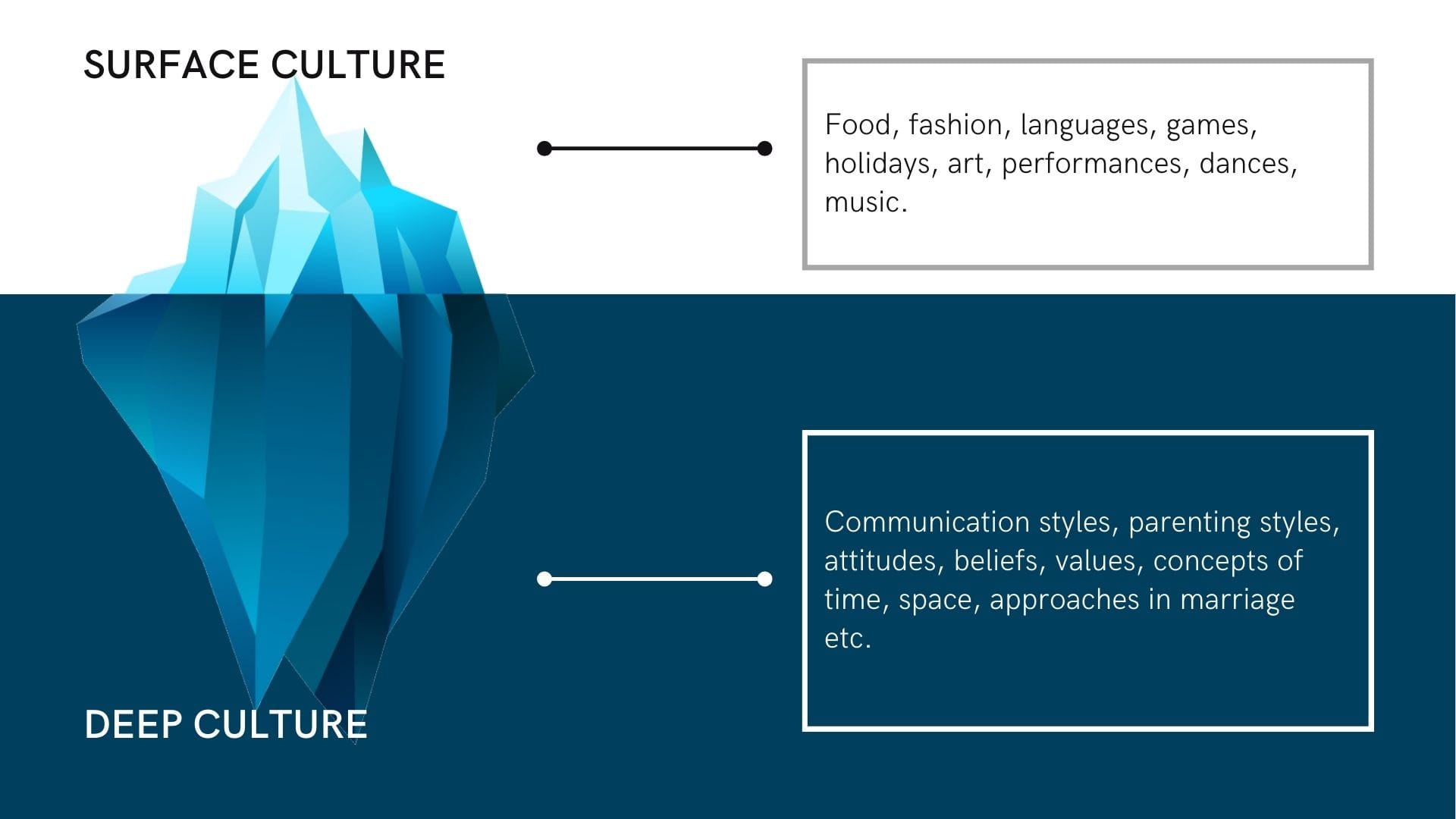Is The Cultural Iceberg Model Still Useful?
The Cultural Iceberg is one of many mental models to interpret cultures. Mental models help us understand the world we live in and interpret human behaviour.

Imagine you are an alien landing in a completely new world—the pink sky behind green clouds. The land is arid. The air smells like oranges.
Creatures in control of this planet look different from the people on Earth. You observed a group of locals interacting. They speak in an unrecognisable language and make odd gestures.
How do you begin to understand?
We navigate unfamiliar cultural settings all the time, whether as the only adult in a room of teenagers, the only accountant in a department of engineers, the only woman in a room of men, or the only minority in the majority group.
Navigating unfamiliar places and people is a challenge. In a new place, your mind and senses become awake. New sights, new sounds, new smells, or odd sensations on the skin. In meeting new people, your mind does impressive acrobatics. The mind translates babbling speech, indecipherable body language, bizarre hand gestures and quizzical facial expressions.
People from one culture may find it odd when no one smiles, while people from another may find smiling people strange. When in a new cultural environment, how can our minds absorb, digest, interpret, organise, and cope with all this information?
We use mental models.
What is the Iceberg Model?
When understanding people from another culture, we need mental models to decipher behaviours. One of the many models used to understand people from other cultures is the Iceberg model.

Why an Iceberg?
Only a tiny 10% of the iceberg appears above water, while a significant 90% is submerged underwater. The surface iceberg refers to the visible elements of culture, such as costumes, music, cuisines, language, newspapers, and TV. The submerged iceberg refers to the invisible aspects of culture, such as superstitions, values, beliefs, myths, and many others.
The surface culture is also known as Objective Culture. Objective Culture refers to the conscious and visible elements or objective knowledge of culture. These elements can be learned and easily changed.
For example, it is now easy to learn any language anytime and anywhere globally. The market for online language learning platforms is expected to reach USD 172 billion in 2027. Duolingo, the largest language learning app, is worth over USD 6 billion.
Anyone can invest time and money into learning the surface culture. However, solely relying on learning surface culture is not enough to absorb and grasp the essence of the new culture. We must dive into the depths to understand our cultural iceberg.
Submerged culture is also known as Subjective Culture. Subjective Culture refers to the subjective knowledge of a culture, typically residing in the unconscious. It is learned implicitly and often challenging to change. It is the very thing that people take for granted and is assumed to be universally understood.
It’s precisely these moments when you witness something odd; your mind does a double-take and wonders, “Shouldn’t they know already?”
For example, Londoners are conditioned to stand on the right of the escalators in the London Tube. Singaporeans stand on the left of the escalators in the MRT, also known as Mass Rapid Transit. A foreigner may be utterly unaware of these taken-for-granted rules in Singapore or London and might hear tuts or see frustrated sideway looks from others. Or you might hear locals muttering “tourists” under their breath.
Unfortunately, learning these taken-for-granted rules of a new culture requires trial and error. It requires the consistent courage of regular interactions with its place and people. It is the continuous reflections and nudging at the boundaries. And all too often with limited guidance.
Where does the Iceberg Model come from?
The Iceberg Model of Culture was first proposed by Edward T. Hall, an American Anthropologist and cross-cultural researcher, in his book Beyond Culture in 1976. Since then, many other researchers and cross-cultural experts have used this model as an analogy to describe culture. Hall observed and researched the nature of culture and found that.
What gives man his identity no matter where he is born-is his culture, the total communication framework: words, actions, postures, gestures, tones of voice, facial expressions, the way he handles time, space and materials, and the way he works, plays, makes love and defends himself. … Everything man is and does is modified by learning and is therefore malleable
According to Hall, all behaviour patterns can be learned and become habitual.
gradually sink below the surface of the mind and, like the admiral of a submerged fleet, control from the depths.
We uncover the unconscious and habitual patterns only through intercultural encounters. Intercultural encounters bring awareness to the taken-for-granted behaviours and force us to reflect on the significance of the behaviour.
How do you think you could use the Iceberg Model?
The primary purpose of the Iceberg Model of Culture is to remind us that culture is more than can be seen, more than what meets the eye.
Thus, we cannot judge a new culture based on what we see above the water. Knowing a particular culture's hidden depths requires time, trial and error. We can uncover a society’s underlying values and beliefs through engagement with the new culture interactions.
But Culture is not like an Iceberg…
While mental models are helpful in understanding the world, relying on one model limits your perception. As Abraham Maslow once said in 1966,
I suppose it is tempting, if the only tool you have is a hammer, to treat everything as if it were a nail.
Maslow referred to a cognitive bias called the Law of the Instrument, also known as the Law of the Hammer or Golden Hammer. This cognitive bias refers to a person’s tendency to over-rely on a tool or method most familiar to them. This is the danger of over-relying on the Iceberg Model of culture.
In truth, culture is more complex than the iceberg analogy. The Iceberg model does not address the processes, interactions, and dynamics of culture. While the iceberg is a tangible object, culture is based on a person’s perception, experiences, context, place, and time.
The 90% cultural iceberg perpetuates the notion that culture is all too mysterious and unknowable. In fact, it is the opposite.
Social scientists have made strides in understanding culture for the past 100 years. While we don’t have all the answers, culture is not entirely mysterious or unknowable.
Mental models are only representations of reality. They help us understand the world we live in and interpret human behaviour. When entering a new culture, it is beneficial to use a mental model for guidance, a compass, if you will.
We can use the Iceberg Model as a guide to understanding our culture and the culture of others. Nevertheless, relying solely on one model will limit our perspective on the people and the world. Referring to a compass for directions and ignoring other tools such as your maps, the weather, and even your GPS will not take us far. As such, we must constantly learn and try different models to gain diverse perspectives. Bruce Lee once said,
Learning is definitely not mere imitation, nor is it the ability to accumulate and regurgitate fixed knowledge. Learning is a constant process of discovery – a process without end.
This post is updated from the originally published post on Culture Spark Global on 14 September 2021 and written by the same author, Ling Ling Tai.





